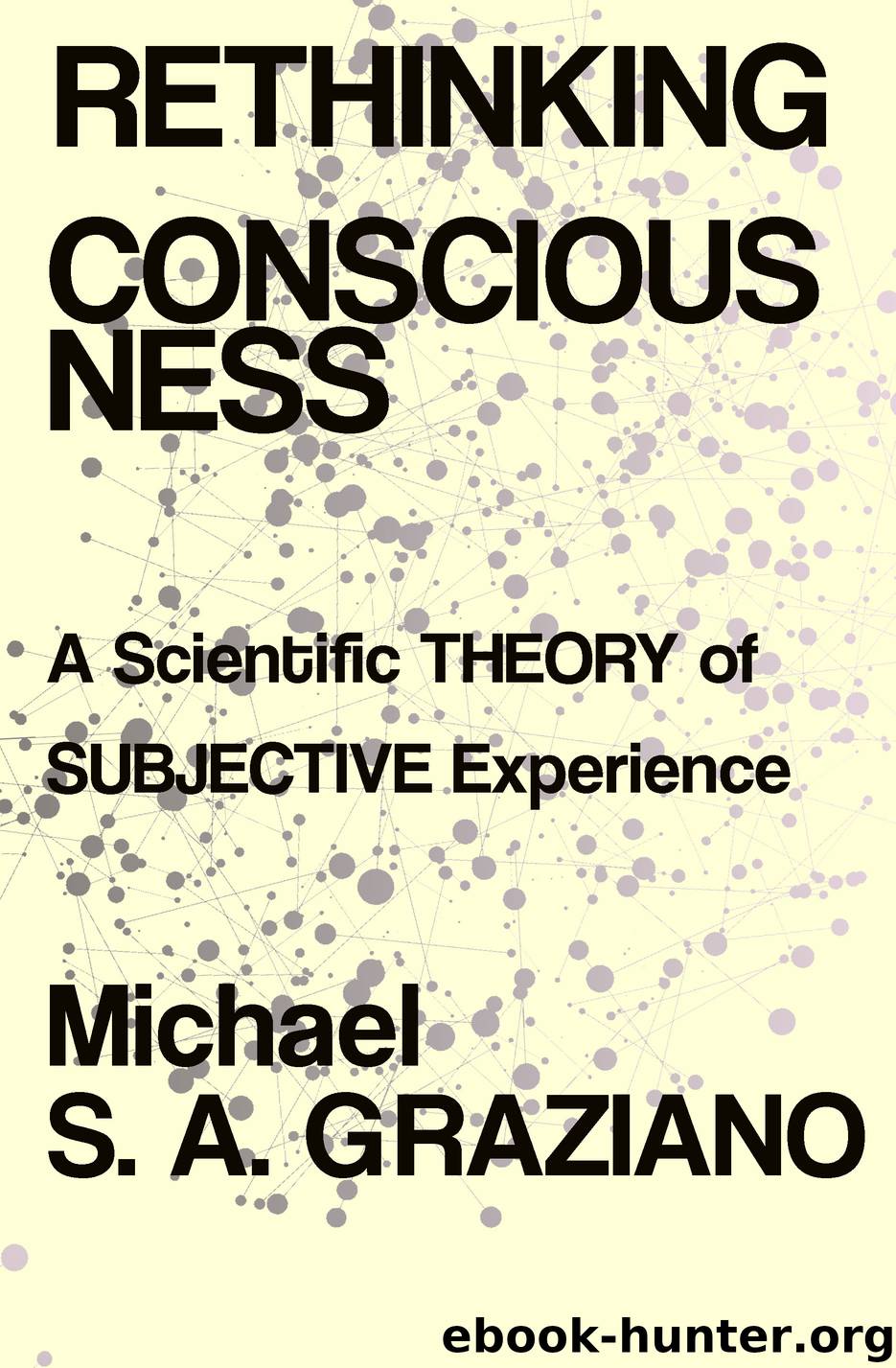Rethinking Consciousness by Michael S A Graziano

Author:Michael S A Graziano
Language: eng
Format: epub
Publisher: W. W. Norton & Company
Published: 2019-08-04T16:00:00+00:00
INTEGRATED INFORMATION
When you pick up an apple, you can process the color, the shape, the smell, the smooth feel, the sound as you bite into it, the taste, your emotional response, and many other related aspects. Each of these features, in isolation, could be processed in your brain without engaging awareness. Even an emotional reaction can run subconsciously. But when consciousness is brought to bear, the components click together into a single, rich understanding.
This kind of observation has led to a consensus view—one of the very few—that consciousness is related to the massive integration of information throughout the brain.35 Exactly how the two processes interact is debated. Some theories suggest that consciousness causes information to bind together. Others suggest the causality goes the other way: integrating information together into complex webs causes consciousness to arise. The best-known version is the aptly named integrated information theory of Giulio Tononi.36 Proponents of his theory compute a number, phi, which represents how much integrated information is present in an object, be it a brain or a cell phone or anything else. As phi increases, so does consciousness.
Some of the details of these theories may not be compatible with the attention schema theory, but they all share a common insight: consciousness has a relationship to the integration of information. Here I want to focus on a fundamental point about integration that is easily overlooked. In a way, information itself can be sticky, and some kinds of information are stickier than others.
Imagine a scattering of dots on a piece of paper, most of them black, a few of them red. The red ones form a larger shape, the letter X. The shape stands out to your eyes. The shared information about color binds the dots together. The importance of this observation was first understood by the Gestalt psychologists of the early twentieth century, who studied the hidden rules that group visual images into larger wholes.37 I don’t mean that color information is literally sticky or that small atoms of information spontaneously bind into large information molecules. But in the particular information system of the brain, in a qualified, high-level way, color information can stick different pieces of shape information together. Color is a classic information connector.
Color is limited to the visual domain. It helps us group objects across the field of view, but obviously can’t connect information across the other senses. Spatial location, however, is a more general connector. If you see the twitchy motion of a bird on a branch and hear a chirp that comes from the same location, you will tend to associate the two and treat them as a single object.38 By linking visual information and sound information to the same piece of location information, like connecting tinker toys, your brain can join the whole set together into a larger, unified package.
One reason why location is so versatile as a connector is that it is a relational property. Location information doesn’t describe a specific intrinsic feature of the bird, like color, shape, or loudness, which would limit its generality.
Download
This site does not store any files on its server. We only index and link to content provided by other sites. Please contact the content providers to delete copyright contents if any and email us, we'll remove relevant links or contents immediately.
The Art of Thinking Clearly by Rolf Dobelli(10217)
Mindhunter: Inside the FBI's Elite Serial Crime Unit by John E. Douglas & Mark Olshaker(9199)
Change Your Questions, Change Your Life by Marilee Adams(7635)
Nudge - Improving Decisions about Health, Wealth, and Happiness by Thaler Sunstein(7615)
Mastermind: How to Think Like Sherlock Holmes by Maria Konnikova(7227)
The Power of Now: A Guide to Spiritual Enlightenment by Eckhart Tolle(5604)
Men In Love by Nancy Friday(5155)
Altered Sensations by David Pantalony(5045)
Factfulness: Ten Reasons We're Wrong About the World – and Why Things Are Better Than You Think by Hans Rosling(4694)
The Confidence Code by Katty Kay(4187)
Thinking in Bets by Annie Duke(4152)
Man and His Symbols by Carl Gustav Jung(4066)
The Worm at the Core by Sheldon Solomon(3433)
Why Buddhism is True by Robert Wright(3403)
Liar's Poker by Michael Lewis(3368)
Three Women by Lisa Taddeo(3353)
The Inner Life of Animals by Peter Wohlleben(3259)
Descartes' Error by Antonio Damasio(3229)
How Music Works by David Byrne(3186)
